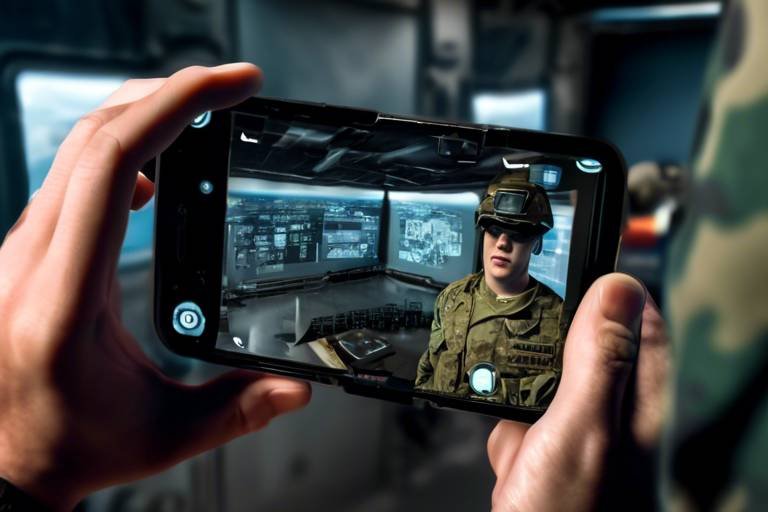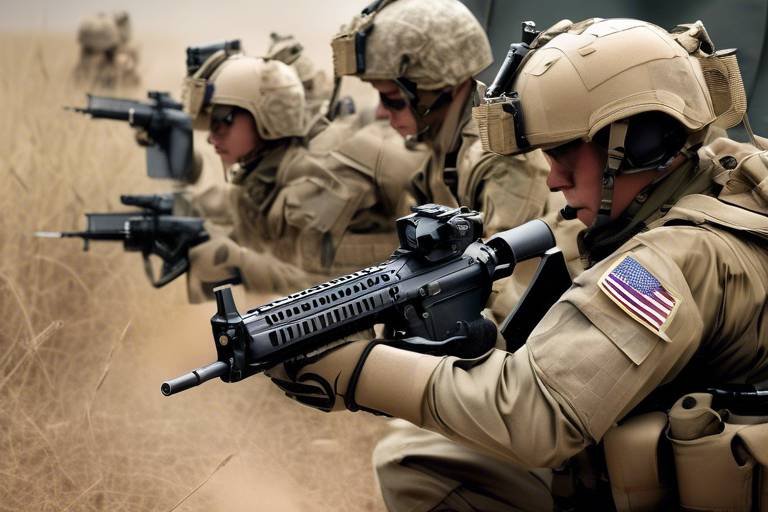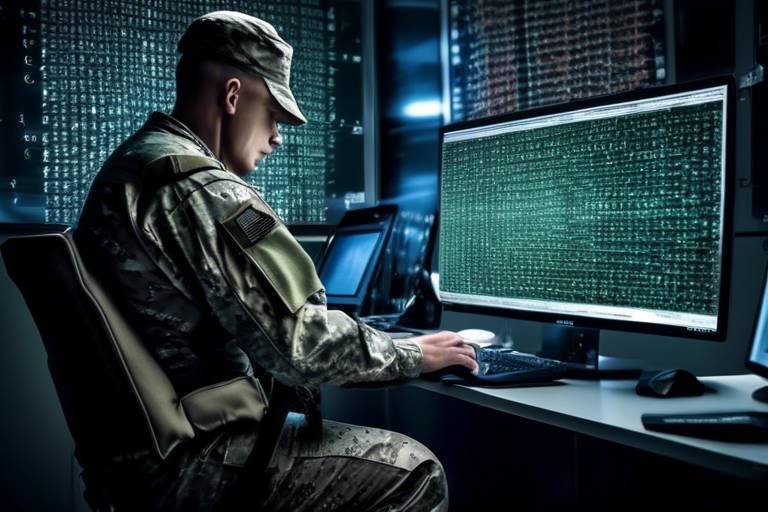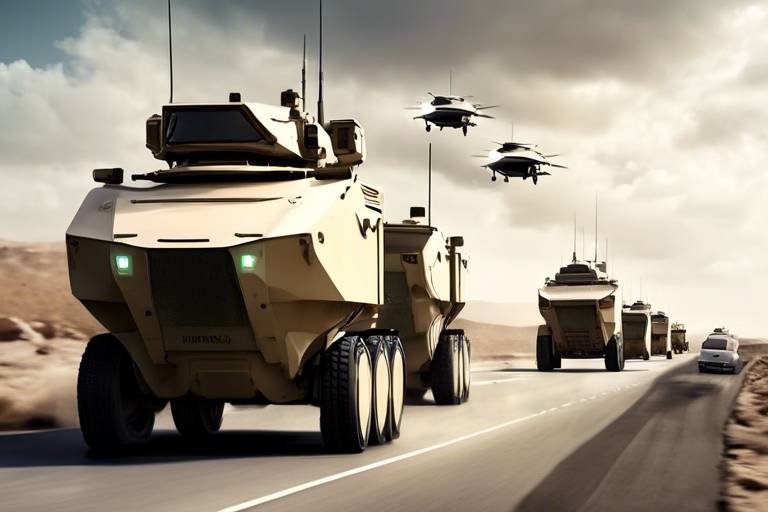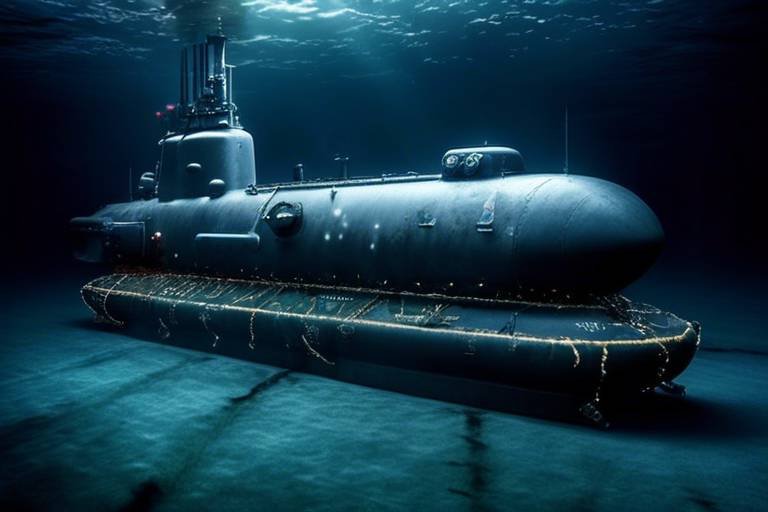Exploring Military Applications of Augmented Reality
Augmented Reality (AR) is not just a buzzword in tech circles; it's a game-changer in the military realm. Imagine a world where soldiers can see critical information overlaid on their field of vision, enhancing their operational effectiveness and decision-making capabilities. This innovative technology is transforming military operations in ways we never thought possible. From training simulations that mimic real combat scenarios to advanced situational awareness on the battlefield, AR is revolutionizing how the military prepares for and engages in missions.
The beauty of AR lies in its ability to blend the physical world with digital data, creating an immersive experience that enhances the way soldiers perceive their environments. Picture this: a soldier on the ground receives real-time updates about enemy movements, terrain challenges, and mission objectives, all while keeping their eyes on the battlefield. This is not science fiction; it’s the reality of military operations today. As we delve deeper into the various applications of AR in the military, you'll discover how this technology is not just improving efficiency but also saving lives.
AR is particularly impactful in training scenarios. Traditional training methods often lack the realism necessary to fully prepare soldiers for the chaos of combat. However, with AR, trainees can engage in simulations that closely resemble actual battle conditions. This immersive training helps soldiers hone their skills in a controlled environment, significantly improving their readiness and response times. Imagine practicing a complex maneuver in a virtual landscape that reacts just like the real world—this is the future of military training.
Moreover, AR enhances situational awareness, which is crucial during missions. Soldiers equipped with AR devices can access maps, tactical data, and other vital information without taking their eyes off the action. This capability is essential for making quick decisions that can mean the difference between success and failure on the battlefield. In tactical operations, AR provides visual aids that highlight threats, objectives, and safe routes, which significantly boosts mission success rates while minimizing risks.
The integration of AR with drone technology is another exciting development. Drones equipped with AR can perform aerial reconnaissance, providing ground troops with a bird's-eye view of the battlefield. This enhanced visibility allows soldiers to assess enemy positions and terrain complexities, making strategic planning more informed and effective. Additionally, wearable AR devices, like smart glasses, enable soldiers to access critical information hands-free, allowing them to maintain focus on their surroundings while receiving vital updates.
AR is also making waves in maintenance and repairs of military equipment. Technicians can utilize AR to receive step-by-step visual instructions, streamlining the repair process and reducing equipment downtime. This efficiency is crucial in a military context, where every second counts. By minimizing the time spent on maintenance, military units can remain operational longer and respond more effectively to emerging threats.
Furthermore, AR facilitates data visualization, enabling military leaders to analyze complex information quickly. This capability aids in strategic planning, ensuring that decisions are based on the most accurate and up-to-date data available. Real-time intelligence sharing through AR ensures all team members are on the same page, fostering collaboration and enhancing coordination during joint operations or multi-unit engagements.
Looking ahead, the future of military augmented reality is bright. With advancements in artificial intelligence and machine learning, the capabilities of AR are set to expand even further. Imagine a battlefield where AR not only provides data but also predicts enemy movements and suggests tactical adjustments in real time. This level of sophistication could make military operations more efficient and effective across various combat scenarios.
- What is Augmented Reality (AR)? AR is a technology that overlays digital information, such as images and data, onto the real world, enhancing the user's perception of their environment.
- How is AR used in military training? AR is used to create immersive simulations that replicate real-world combat scenarios, allowing soldiers to practice skills in a controlled environment.
- What are the benefits of AR for situational awareness? AR provides soldiers with real-time data overlays, maps, and critical information, improving decision-making and strategic planning during missions.
- Can AR be integrated with drones? Yes, AR can enhance drone capabilities by providing aerial reconnaissance and surveillance, giving ground troops better visibility of enemy positions.
- What is the future of AR in the military? The future looks promising, with advancements in AI and machine learning expected to enhance AR capabilities, making military operations more efficient and effective.

Enhancing Training Simulations
Augmented reality (AR) is truly a game changer when it comes to military training simulations. Imagine a world where soldiers can step into a virtual battlefield while still being in a safe environment. With AR, this is not just a dream—it's a reality. By creating immersive simulations that closely mimic real-world scenarios, AR allows soldiers to practice critical skills without the risks associated with live training. This revolutionary technology enables them to experience the chaos of combat, learn to react under pressure, and refine their decision-making skills—all while enhancing their overall readiness and response times.
One of the most significant advantages of AR in training is its ability to provide real-time feedback. As soldiers engage with the simulation, they can receive instant evaluations on their performance, allowing them to understand their strengths and weaknesses immediately. This kind of feedback loop is essential for effective learning and skill acquisition. For example, if a soldier makes a tactical error during a simulation, AR can highlight the mistake and offer suggestions for improvement, turning every misstep into a valuable learning experience.
Moreover, AR training simulations can be tailored to meet the specific needs of different units or missions. Whether it's urban warfare, reconnaissance, or combat medic training, AR can create a customized environment that challenges soldiers in ways that are relevant to their upcoming operations. This adaptability ensures that training remains engaging and effective, keeping soldiers motivated and focused on their objectives.
To illustrate the impact of AR in military training, consider the following table that outlines the key benefits:
| Benefit | Description |
|---|---|
| Immersive Experience | Simulates real-world scenarios for realistic training. |
| Instant Feedback | Provides real-time evaluations to improve skills. |
| Customizable Training | Adapts to specific mission requirements and unit needs. |
| Cost-Effective | Reduces the need for expensive live training exercises. |
Additionally, AR enhances the collaborative aspect of training. Soldiers can train together in a shared virtual environment, regardless of their physical location. This feature is particularly beneficial for joint operations, where multiple units must work seamlessly together. By practicing in AR, soldiers can develop a better understanding of each other's roles, fostering teamwork and enhancing operational effectiveness.
In conclusion, the integration of augmented reality into military training simulations is transforming how soldiers prepare for combat. By providing an engaging, safe, and effective training environment, AR not only enhances individual skills but also strengthens unit cohesion and readiness. As technology continues to evolve, we can expect even more innovative applications of AR in military training, paving the way for a new era of preparedness.
- What is augmented reality in military training?
Augmented reality in military training refers to the use of digital overlays and simulations to create immersive training environments that replicate real-world scenarios. - How does AR improve soldier readiness?
AR enhances soldier readiness by providing realistic training experiences, instant feedback, and the ability to practice in a safe environment. - Can AR training be customized?
Yes, AR training can be tailored to meet the specific needs of different military units and missions, ensuring relevant and effective practice. - What are the benefits of using AR in military training?
The benefits include immersive experiences, instant feedback, customizable training, and cost-effectiveness compared to traditional live training exercises.
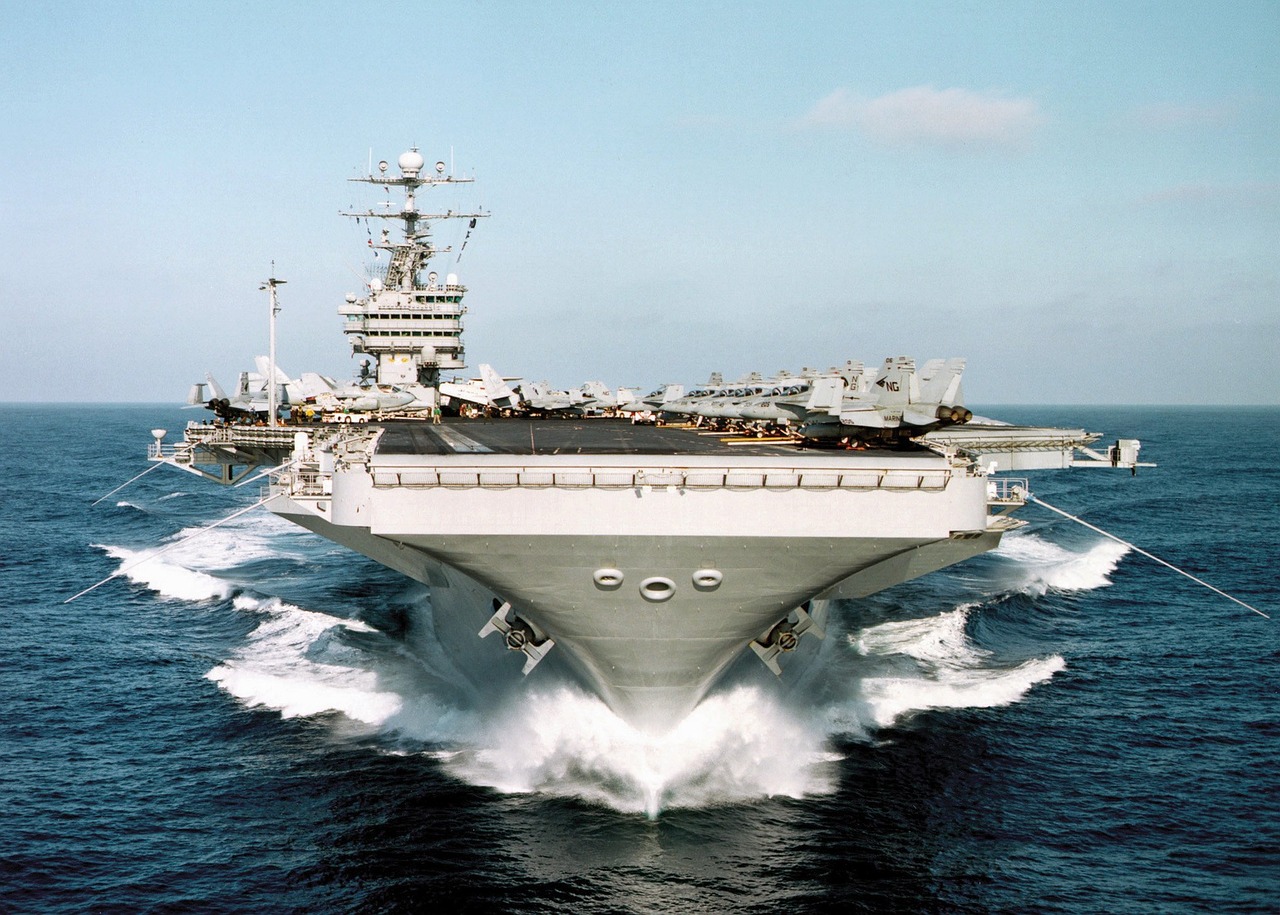
Improving Situational Awareness
In the fast-paced and unpredictable environment of modern warfare, situational awareness is paramount. Soldiers must be able to assess their surroundings quickly and accurately to make crucial decisions that can mean the difference between success and failure. Enter Augmented Reality (AR), a game-changing technology that is revolutionizing how military personnel perceive and interact with their environments. Imagine walking through a battlefield where vital information is literally at your fingertips—this is the power of AR.
AR enhances situational awareness by overlaying critical real-time data onto the soldier's field of vision. This technology allows troops to visualize maps, enemy positions, and even the status of their own units without taking their eyes off the battlefield. For example, a soldier equipped with AR glasses can see a digital map that highlights potential threats, safe pathways, and mission objectives, all while remaining engaged with the immediate surroundings. This seamless integration of information not only boosts confidence but also drastically improves reaction times.
One of the standout features of AR in military applications is its ability to provide contextual information. When a soldier approaches a building, for instance, AR can display data about potential threats inside, previous encounters, or even structural weaknesses. This kind of information is invaluable; it allows for informed decision-making that can mitigate risks and enhance the chances of mission success. The technology transforms the battlefield into a dynamic information hub, where data is not just available but is actively guiding actions.
Moreover, AR facilitates communication and collaboration among units. With real-time data sharing, soldiers can coordinate their movements and strategies more effectively. Consider a scenario where multiple units are engaged in a joint operation; AR can provide a shared view of the battlefield, allowing for synchronized actions that are critical in high-stakes situations. This level of connectivity fosters a sense of teamwork and unity, ensuring that everyone is on the same page, literally and figuratively.
To illustrate the impact of AR on situational awareness, let's take a look at a comparison of traditional methods versus AR-enhanced operations:
| Aspect | Traditional Methods | AR-Enhanced Methods |
|---|---|---|
| Data Access | Manual reports, maps, and radio communication | Real-time overlays and visual data |
| Reaction Time | Slower due to information processing | Instantaneous updates and alerts |
| Collaboration | Limited to verbal communication | Shared visual data and maps |
| Decision Making | Based on fragmented information | Informed by comprehensive, real-time data |
The advancements in AR technology are paving the way for a future where situational awareness is not just enhanced but transformed. As military operations become increasingly complex, the need for effective situational awareness will only grow. AR stands at the forefront of this evolution, promising to deliver a level of insight and understanding that was previously unimaginable.
- What is augmented reality in the military? Augmented reality in the military refers to technology that overlays digital information onto the real world, enhancing situational awareness and decision-making for soldiers.
- How does AR improve training for soldiers? AR provides immersive training simulations that replicate real-world scenarios, allowing soldiers to practice skills in a controlled environment.
- Are there any risks associated with using AR in military operations? While AR significantly enhances situational awareness, reliance on technology can pose risks if systems fail or if soldiers are not adequately trained to interpret the information.
- What are the future trends for AR in the military? Future trends include advancements in AI and machine learning that will further enhance AR capabilities, making operations more efficient and effective.

AR in Tactical Operations
In the fast-paced world of military operations, the stakes are incredibly high. Soldiers often face life-or-death situations, where every second counts and decisions must be made swiftly. This is where Augmented Reality (AR) steps in as a game-changer. By overlaying vital information onto the real-world environment, AR provides soldiers with a tactical advantage that can be the difference between success and failure in the field. Imagine a soldier stepping into a combat zone, equipped with AR technology that highlights potential threats, objectives, and safe routes—all in real time. This is not science fiction; it's the reality of modern warfare.
One of the most significant benefits of AR in tactical operations is its ability to enhance situational awareness. With AR, soldiers can access a wealth of information at a glance. For instance, they might see a digital map showing the positions of friendly and enemy forces, or receive alerts about incoming threats. This real-time data can be crucial for making informed decisions quickly. The integration of AR into tactical gear allows soldiers to maintain their focus on the mission while still being aware of their surroundings.
Consider the following key features of AR in tactical operations:
- Threat Identification: AR can highlight enemy positions, allowing soldiers to assess threats before they become critical.
- Mission Objectives: Visual markers can indicate specific targets or objectives, ensuring that soldiers stay on track during complex operations.
- Safe Navigation: AR can provide real-time guidance on safe routes, reducing the risk of ambush or hazardous encounters.
The implementation of AR in tactical operations also fosters better communication among team members. With shared visual data, soldiers can coordinate their actions more effectively, ensuring that everyone is on the same page. This level of collaboration is vital, especially in joint operations where multiple units must work in harmony.
Moreover, AR technology is not just limited to ground troops. It can also be used in conjunction with aerial support, such as drones. Imagine a drone providing live video feeds that are augmented with tactical overlays, giving ground forces a comprehensive view of the battlefield. This synergy between ground and air units enhances overall mission success rates, as soldiers can make more informed decisions based on real-time intelligence.
As we look to the future, the potential for AR in tactical operations is vast. With advancements in technology, we can expect even more sophisticated applications that will further enhance the capabilities of our military forces. The integration of AI and machine learning will likely lead to AR systems that can predict threats and suggest optimal strategies, making our soldiers not just reactive but proactive in their approach to combat.
In conclusion, AR is revolutionizing tactical operations in the military by providing soldiers with the tools they need to succeed in high-pressure environments. As this technology continues to evolve, we can anticipate a future where our armed forces are equipped with unparalleled situational awareness and decision-making capabilities, ultimately leading to safer and more effective missions.
- What is Augmented Reality (AR)?
AR is a technology that overlays digital information—such as images, sounds, or GPS data—onto the real world, enhancing the user's perception of their environment. - How does AR improve military training?
AR provides immersive simulations that replicate real-world scenarios, allowing soldiers to practice skills in a controlled environment, thus improving readiness and response times. - Can AR be used in joint operations?
Yes, AR enhances communication and coordination among different military units by providing shared visual data, ensuring that all team members have access to the same information. - What are some future trends in military AR?
Advancements in AI and machine learning are expected to enhance AR capabilities, making military operations more efficient and effective in various combat scenarios.

Integration with Drones
Imagine a battlefield where every soldier is equipped with the power of augmented reality (AR), seamlessly integrated with drone technology. This futuristic scenario is not just a figment of our imagination; it is rapidly becoming a reality. The integration of AR with drones is transforming how military operations are conducted, offering a level of situational awareness that was previously unimaginable. By harnessing the aerial capabilities of drones, soldiers on the ground can gain enhanced visibility into enemy positions, terrain complexities, and potential threats, all in real time.
The synergy between AR and drones allows for a comprehensive operational overview. For instance, when a drone is deployed for reconnaissance, it can transmit live video feeds and data overlays directly to soldiers’ AR devices. This means that as troops advance, they can see a live map of the area, highlighting not only their own position but also marking enemy locations and safe routes. Such information is invaluable, as it enables quick decision-making and strategic planning, ultimately leading to increased mission success rates.
Furthermore, the integration of AR with drones enhances communication among units. Imagine a scenario where multiple drones are deployed across different sectors of a battlefield. Each drone collects data, which is then processed and shared through an AR interface. This creates a shared understanding of the operational environment, allowing units to coordinate their movements effectively. The result? A well-orchestrated operation where each soldier is not just a lone warrior but part of a cohesive team, all working towards a common goal.
Additionally, the use of drones equipped with AR capabilities can also play a crucial role in search and rescue missions. In situations where time is of the essence, drones can quickly survey a large area, identify potential casualties, and relay this information back to ground forces. This not only speeds up the response time but also increases the chances of saving lives. The ability to visualize critical data in real time can make all the difference in high-stakes environments.
As we look to the future, the potential for AR and drone integration seems limitless. With advancements in technology, we may soon see drones that can autonomously navigate and relay information without direct human control. This would free up soldiers to focus on their primary tasks while still benefiting from the intelligence provided by their flying counterparts.
In conclusion, the integration of augmented reality with drone technology is revolutionizing military operations. It enhances situational awareness, improves communication, and ultimately leads to more effective and efficient missions. As this technology continues to evolve, we can expect to see even greater advancements that will further change the landscape of modern warfare.
- What is augmented reality (AR)?
Augmented reality is a technology that overlays digital information, such as images and data, onto the real world, providing users with enhanced experiences and insights.
- How do drones enhance military operations?
Drones provide aerial reconnaissance, real-time data collection, and improved situational awareness, allowing ground troops to make informed decisions during missions.
- What are the benefits of integrating AR with drones?
Integrating AR with drones enhances visibility, facilitates real-time communication, and improves coordination among military units, ultimately leading to increased mission success rates.
- Can AR and drones be used for search and rescue missions?
Yes, drones equipped with AR technology can quickly survey areas, identify casualties, and relay critical information to ground forces, speeding up response times in emergencies.

Wearable AR Devices
When it comes to the battlefield, hands-free access to crucial information can be a game changer, and that's where wearable augmented reality (AR) devices shine. Imagine a soldier equipped with smart glasses that overlay vital data right in their line of sight. This technology empowers them to maintain situational awareness while keeping their hands free for other essential tasks. It’s like having a personal assistant that whispers critical updates while you’re in the thick of action.
These devices are not just about convenience; they significantly enhance operational efficiency. For instance, during a mission, soldiers can receive real-time updates on enemy movements, tactical changes, or even equipment status without breaking their focus. This seamless integration of information means that decisions can be made faster and with greater confidence. In high-pressure environments, where every second counts, being able to glance at a heads-up display (HUD) can mean the difference between success and failure.
Moreover, the adaptability of wearable AR devices extends beyond combat scenarios. They can be utilized in various military applications, including:
- Training Exercises: Soldiers can practice in simulated environments while receiving real-time feedback.
- Maintenance Tasks: Technicians can view step-by-step repair instructions overlaid on equipment, making complex tasks simpler.
- Logistics Management: Personnel can track supplies and equipment locations without needing to consult paper maps or devices.
As technology advances, the functionalities of these wearable devices are expected to expand. Features like voice commands, gesture controls, and even biometric monitoring could be integrated, providing an even more comprehensive toolset for soldiers. Picture a soldier being able to command their device with just a wave of their hand or a spoken command, allowing them to keep their focus on the mission at hand. This level of integration not only enhances efficiency but also contributes to reducing cognitive load, allowing soldiers to operate more effectively under stress.
In summary, wearable AR devices are revolutionizing how military personnel interact with their environment. By providing critical information in an accessible format, they enhance decision-making, improve safety, and ultimately lead to more successful missions. As we look to the future, the potential for these devices is vast, and they are poised to become indispensable tools in the arsenal of modern warfare.
- What are wearable AR devices?
Wearable AR devices are technologies, such as smart glasses, that overlay digital information onto the user's view of the real world, providing hands-free access to critical data. - How do wearable AR devices benefit soldiers?
They enhance situational awareness, improve decision-making, and allow soldiers to maintain focus on their environment while accessing vital information. - Can these devices be used in training?
Yes, wearable AR devices are used in training exercises to create immersive simulations and provide real-time feedback to soldiers. - What future advancements can we expect in AR technology?
Future advancements may include improved voice and gesture controls, biometric monitoring, and enhanced integration with other military technologies.
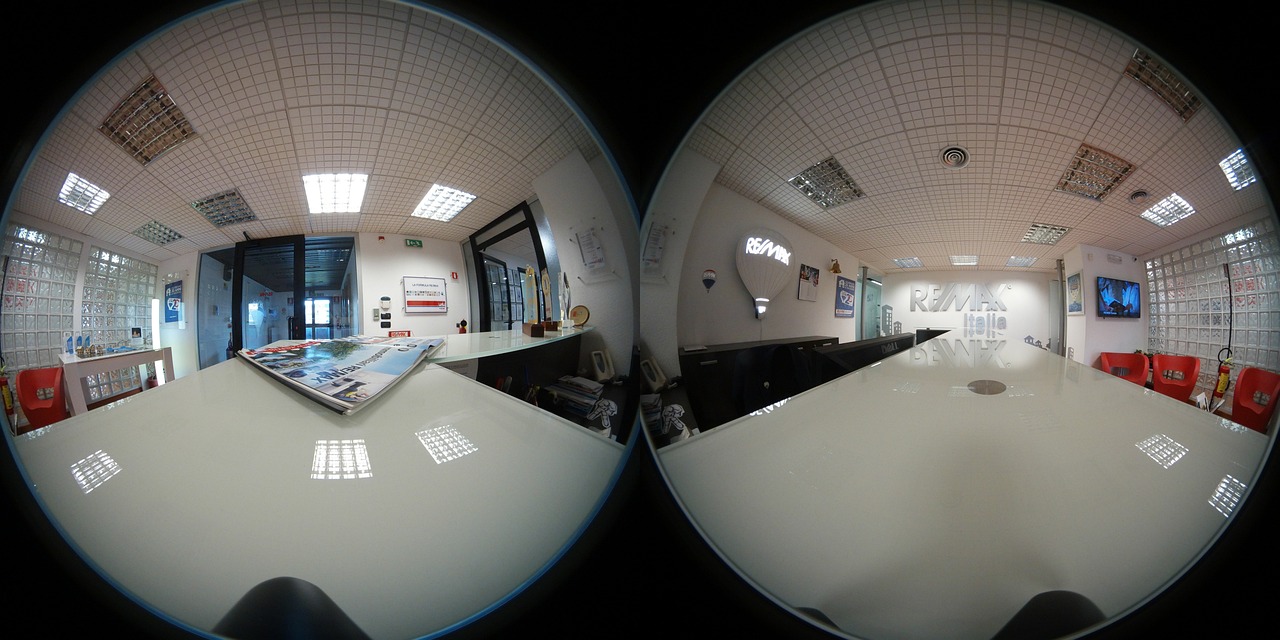
AR for Maintenance and Repairs
In the fast-paced world of military operations, maintenance and repairs of equipment are crucial to ensure that everything runs smoothly. Imagine a scenario where a soldier encounters a malfunction in a critical piece of equipment during a mission. Traditional methods of troubleshooting can be time-consuming and may lead to extended downtime, which is simply not an option in high-stakes environments. This is where Augmented Reality (AR) steps in to revolutionize the process.
AR technology provides technicians with interactive, step-by-step visual instructions that guide them through maintenance and repair tasks. By overlaying digital information onto the physical world, soldiers can see precisely what needs to be done, right in front of them. This not only enhances the efficiency of the repair process but also minimizes the risk of human error. For instance, instead of flipping through manuals or searching for videos, technicians can simply look at the equipment and see the necessary steps displayed in real-time.
Furthermore, AR can be integrated with machine learning algorithms to predict potential issues before they arise. By analyzing data from equipment sensors, AR systems can highlight components that are likely to fail, allowing for proactive maintenance. This predictive capability is akin to having a crystal ball that shows you where problems might occur, enabling teams to address issues before they escalate into major failures.
Consider a scenario where a vehicle needs a critical part replaced. With AR, a technician can don a pair of smart glasses that display a 3D model of the vehicle along with the exact location of the part that needs changing. This immersive experience not only saves time but also boosts the technician's confidence, as they can visualize the task ahead. The following table illustrates how AR enhances the maintenance process:
| Traditional Method | AR-Enhanced Method |
|---|---|
| Manual search for instructions | Real-time visual guidance |
| Higher likelihood of errors | Reduced human error |
| Time-consuming troubleshooting | Quick and efficient repairs |
| No predictive maintenance | Predictive analysis of component failures |
Additionally, AR can facilitate remote assistance. If a technician encounters a particularly challenging issue, they can connect with an expert who can see what the technician sees through their AR device. This collaboration can provide real-time support and advice, ensuring that repairs are conducted swiftly and accurately. It's like having a seasoned mechanic right there in the field, guiding you through the process.
As military operations continue to evolve, the integration of AR in maintenance and repairs is not just a trend; it’s becoming a necessity. The ability to maintain equipment efficiently and effectively can mean the difference between mission success and failure. In this way, AR is not just enhancing operational readiness; it’s transforming the very fabric of how military maintenance is approached.
- What is Augmented Reality (AR)? AR is a technology that overlays digital information onto the real world, enhancing the user's perception and interaction with their environment.
- How does AR improve maintenance processes in the military? AR provides visual instructions, reduces downtime, and minimizes human error by guiding technicians through repairs in real-time.
- Can AR predict equipment failures? Yes, when integrated with machine learning, AR can analyze data from equipment sensors to identify components that may fail in the future.
- What are the benefits of remote assistance using AR? Remote assistance allows technicians to receive real-time support from experts, enhancing problem-solving capabilities and speeding up repairs.

Data Visualization and Analysis
In the fast-paced world of military operations, the ability to quickly analyze and visualize data can mean the difference between success and failure. Augmented Reality (AR) plays a pivotal role in this arena, transforming how military leaders interpret complex datasets. Imagine standing on a battlefield, surrounded by chaos, and having the ability to view critical intelligence layered right before your eyes. This is not science fiction; it is the reality that AR brings to the table.
AR enhances data visualization by allowing military personnel to overlay real-time information onto their physical environment. For instance, soldiers equipped with AR headsets can see tactical maps, troop movements, and even environmental hazards as they navigate through challenging terrains. This immersive experience not only improves situational awareness but also streamlines decision-making processes. Instead of relying solely on verbal reports or 2D maps, commanders can visualize the battlefield in 3D, making it easier to devise effective strategies.
Moreover, AR facilitates the analysis of vast amounts of data by presenting it in a more digestible format. As military operations generate massive datasets—from satellite imagery to reconnaissance reports—AR tools can aggregate this information and display it in intuitive ways. For example, a table might summarize key metrics like troop strength, equipment status, and mission objectives:
| Metric | Value |
|---|---|
| Troop Strength | 150 Soldiers |
| Available Equipment | 20 Armored Vehicles |
| Mission Objectives | Secure the Area, Gather Intelligence |
This kind of data visualization not only enhances understanding but also fosters collaboration among team members. With AR, all personnel can access the same visual data, ensuring everyone is on the same page. This is particularly crucial during joint operations where multiple units must coordinate their efforts seamlessly. Imagine a scenario where a unit is receiving live updates about enemy positions while simultaneously sharing their own movements with allied forces—this level of real-time intelligence sharing is revolutionary.
In addition to improving operational effectiveness, AR also allows for predictive analysis. By integrating machine learning algorithms, military leaders can forecast potential outcomes based on current data trends. This capability can be likened to having a crystal ball that provides insights into possible future scenarios, enabling commanders to prepare and adapt their strategies accordingly.
As we look toward the future, the integration of AR with advanced technologies such as artificial intelligence will continue to evolve. This synergy promises to enhance the military's ability to visualize and analyze data even further, paving the way for more informed decision-making and operational success. The possibilities are endless, and as AR technology advances, it will undoubtedly reshape the landscape of military operations.
- What is Augmented Reality in military applications?
Augmented Reality (AR) in military applications refers to the use of technology to overlay digital information onto the physical world, enhancing situational awareness and decision-making. - How does AR improve training simulations?
AR provides immersive training environments that replicate real-world scenarios, allowing soldiers to practice skills in a controlled setting. - Can AR be used in tactical operations?
Yes, AR can enhance tactical operations by providing visual aids that highlight threats, objectives, and safe routes for soldiers on the battlefield. - What are the future trends for AR in the military?
Future trends include advancements in AI and machine learning, which will further improve AR capabilities, making military operations more efficient and effective.
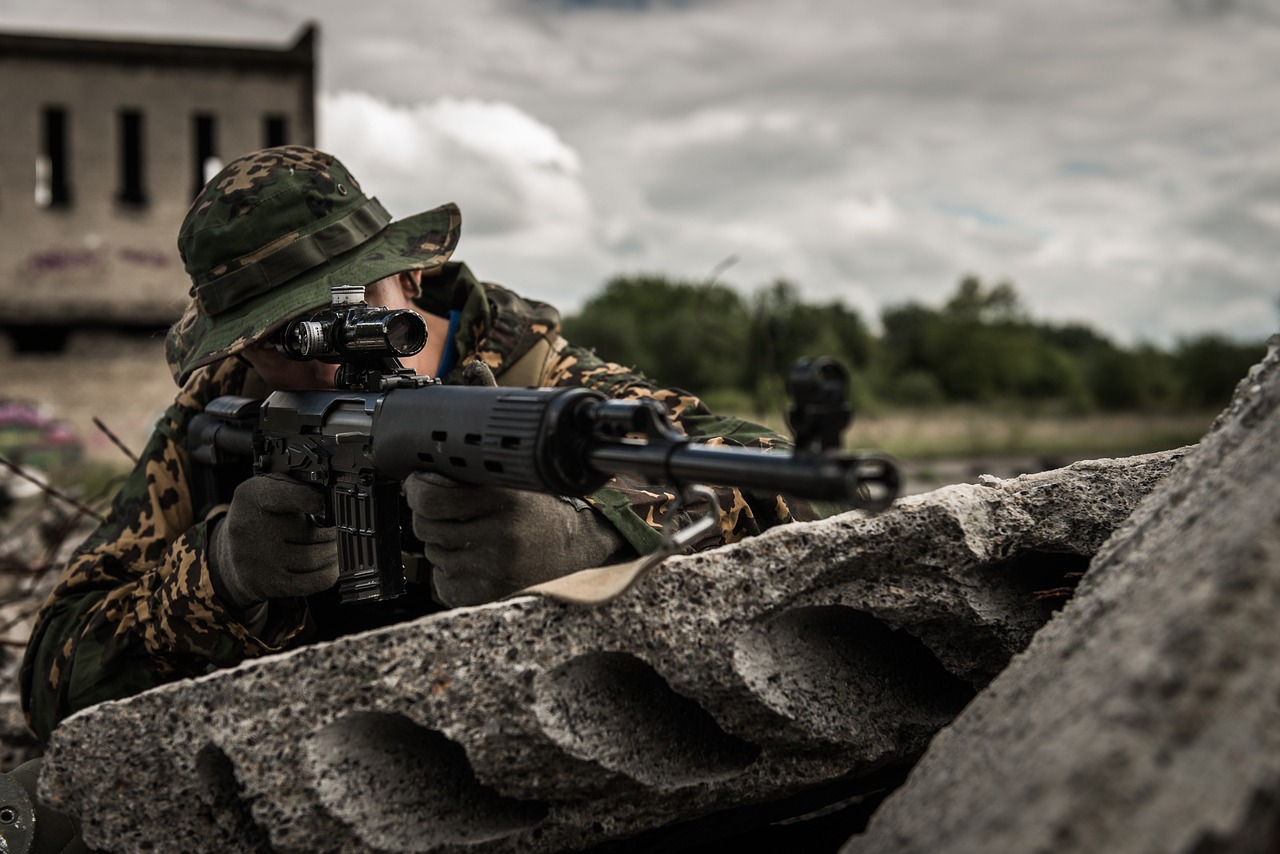
Real-Time Intelligence Sharing
In the fast-paced world of military operations, is a game changer. Imagine being in the heat of battle, where every second counts, and having access to crucial information that can mean the difference between success and failure. This is where augmented reality (AR) steps in, transforming how military personnel communicate and collaborate during missions.
With AR technology, soldiers can receive up-to-the-minute data from various sources directly in their field of vision. Think of it as having a digital assistant right in your helmet, constantly feeding you relevant intel without the need to look away from your surroundings. This capability not only enhances situational awareness but also fosters a culture of collaboration among team members. When everyone is on the same page, the chances of miscommunication are drastically reduced, leading to more cohesive and efficient operations.
Moreover, the integration of AR in real-time intelligence sharing allows for the visualization of complex data. For instance, consider the following table that illustrates how AR can present battlefield information:
| Data Type | Description | Benefit |
|---|---|---|
| Enemy Positions | Real-time overlays of enemy locations | Improved targeting and tactical planning |
| Terrain Maps | 3D visualizations of the battlefield terrain | Enhanced navigation and movement strategies |
| Unit Status | Live updates on the status of allied units | Better coordination and resource allocation |
This kind of data visualization not only makes it easier for commanders to make informed decisions but also empowers individual soldiers by giving them access to the same information. Imagine being a squad leader who can see the same tactical overlays as your troops, ensuring that everyone understands the mission objectives and their roles within it. This shared understanding is crucial, especially in high-stakes situations where quick decisions are necessary.
Furthermore, the ability to share intelligence in real time enhances interoperability among different military units. When multiple branches of the military are involved in a joint operation, having a unified platform for intelligence sharing can streamline communication and prevent delays. This synergy is vital for executing complex maneuvers where timing and precision are everything.
In conclusion, real-time intelligence sharing through augmented reality is not just a technological advancement; it's a revolution in how military operations are conducted. By providing soldiers with immediate access to critical information, AR enhances decision-making, boosts operational effectiveness, and ultimately saves lives on the battlefield. The future looks bright as these technologies continue to evolve, promising even greater improvements in military collaboration and success.
- How does augmented reality improve military training?
AR provides immersive simulations that replicate real-world scenarios, allowing soldiers to practice skills in a controlled environment, thereby improving readiness and response times.
- What are the benefits of real-time intelligence sharing in the military?
Real-time sharing enhances situational awareness, improves coordination, and reduces the chances of miscommunication among team members.
- Can AR be integrated with existing military technologies?
Yes, AR can be integrated with various military technologies, including drones and wearable devices, to enhance operational capabilities.
- What does the future hold for military AR?
The future of military AR looks promising, with advancements in AI and machine learning set to further enhance capabilities and operational efficiency.

Future Trends in Military AR
This article delves into how augmented reality (AR) is transforming military operations, enhancing training, situational awareness, and decision-making processes through innovative technologies and applications.
Augmented reality revolutionizes military training by providing immersive simulations that replicate real-world scenarios, allowing soldiers to practice skills in a controlled environment while improving readiness and response times.
AR technology enhances situational awareness on the battlefield, providing soldiers with real-time data overlays, maps, and critical information that aid in decision-making and strategic planning during missions.
Tactical operations benefit from AR by offering soldiers visual aids that highlight threats, objectives, and safe routes, significantly improving mission success rates and reducing risks during engagements.
The integration of AR with drone technology allows for aerial reconnaissance and surveillance, giving ground troops enhanced visibility and insights into enemy positions and terrain complexities.
Wearable AR devices, such as smart glasses, enable soldiers to receive vital information hands-free, allowing them to maintain focus on their surroundings while accessing critical data in real time.
Augmented reality can streamline maintenance and repair processes for military equipment, providing technicians with step-by-step visual instructions and reducing downtime through efficient troubleshooting techniques.
AR facilitates data visualization, enabling military leaders to analyze complex information quickly. This capability aids in strategic planning and enhances operational effectiveness during missions.
Real-time intelligence sharing through AR ensures that all team members have access to the same information, fostering collaboration and improving coordination during joint operations or multi-unit engagements.
The future of military augmented reality looks incredibly promising, with advancements in artificial intelligence (AI) and machine learning set to further enhance capabilities. Imagine a battlefield where AR not only displays real-time data but also predicts enemy movements based on historical patterns. Such innovations could lead to a significant shift in how military operations are conducted.
Furthermore, the integration of AR with 5G technology will enable faster data processing and sharing, making it possible for soldiers to access critical information almost instantaneously. This could revolutionize decision-making processes during high-stakes missions. For instance, a soldier could receive a live feed from a drone, overlaying it with tactical maps and enemy positions, all in real-time.
As we look ahead, we can also expect to see enhanced collaboration between military and tech companies, leading to the development of customized AR solutions tailored for specific military needs. This partnership could result in more intuitive interfaces, making it easier for soldiers to utilize AR technology effectively.
Moreover, miniaturization of AR devices will play a crucial role. As technology advances, we can expect smaller, lighter, and more powerful devices that can be seamlessly integrated into soldiers' gear without hindering their mobility. This evolution will ensure that AR remains a practical tool in the field, enhancing rather than complicating the soldiers' experiences.
In summary, the future of military AR is not just about enhancing current capabilities; it's about transforming the entire landscape of military operations. With continuous advancements, we are on the brink of a new era where augmented reality will not only support but also redefine how military personnel engage in combat, training, and maintenance.
- What is augmented reality (AR)?
Augmented reality is a technology that overlays digital information, such as images or data, onto the real world, enhancing the user's perception of their environment. - How is AR used in military training?
AR provides immersive simulations that replicate real-world scenarios, allowing soldiers to practice and improve their skills in a safe environment. - What are the benefits of AR in tactical operations?
AR enhances situational awareness by providing real-time data overlays, which help soldiers identify threats and navigate safely during missions. - Will AR technology continue to evolve in the military?
Yes, advancements in AI, machine learning, and 5G technology are expected to further enhance military AR capabilities, making operations more efficient and effective.
Frequently Asked Questions
- What is augmented reality (AR) in military applications?
Augmented reality (AR) in military applications refers to the use of technology to overlay digital information onto the real-world environment. This can include visual aids, maps, and real-time data that enhance situational awareness, improve training simulations, and aid in decision-making processes during military operations.
- How does AR enhance military training?
AR enhances military training by providing immersive simulations that replicate real-world scenarios. Soldiers can practice their skills in a controlled environment, which helps them to improve their readiness and response times without the risks associated with live training exercises.
- What role does AR play in situational awareness on the battlefield?
AR significantly boosts situational awareness by offering soldiers real-time data overlays and critical information. This allows them to make informed decisions quickly and effectively, which is crucial during high-pressure missions on the battlefield.
- Can AR be integrated with drones?
Yes, AR can be integrated with drone technology to provide aerial reconnaissance and surveillance. This integration enhances visibility for ground troops, offering them insights into enemy positions and terrain complexities, which can be vital for mission success.
- What are wearable AR devices, and how do they benefit soldiers?
Wearable AR devices, like smart glasses, allow soldiers to access vital information hands-free. This means they can keep their focus on their surroundings while still receiving critical data in real-time, which enhances their operational effectiveness in the field.
- How does AR assist in maintenance and repairs of military equipment?
AR streamlines maintenance and repair processes by providing technicians with step-by-step visual instructions. This reduces downtime and improves troubleshooting efficiency, ensuring that military equipment remains operational and ready for deployment.
- What is the significance of real-time intelligence sharing through AR?
Real-time intelligence sharing through AR ensures that all team members have access to the same information simultaneously. This fosters collaboration and improves coordination during joint operations or multi-unit engagements, which is essential for mission success.
- What are the future trends for AR in military applications?
The future of AR in military applications looks promising, with advancements in artificial intelligence (AI) and machine learning expected to further enhance capabilities. These technologies will likely make military operations more efficient and effective across various combat scenarios.

